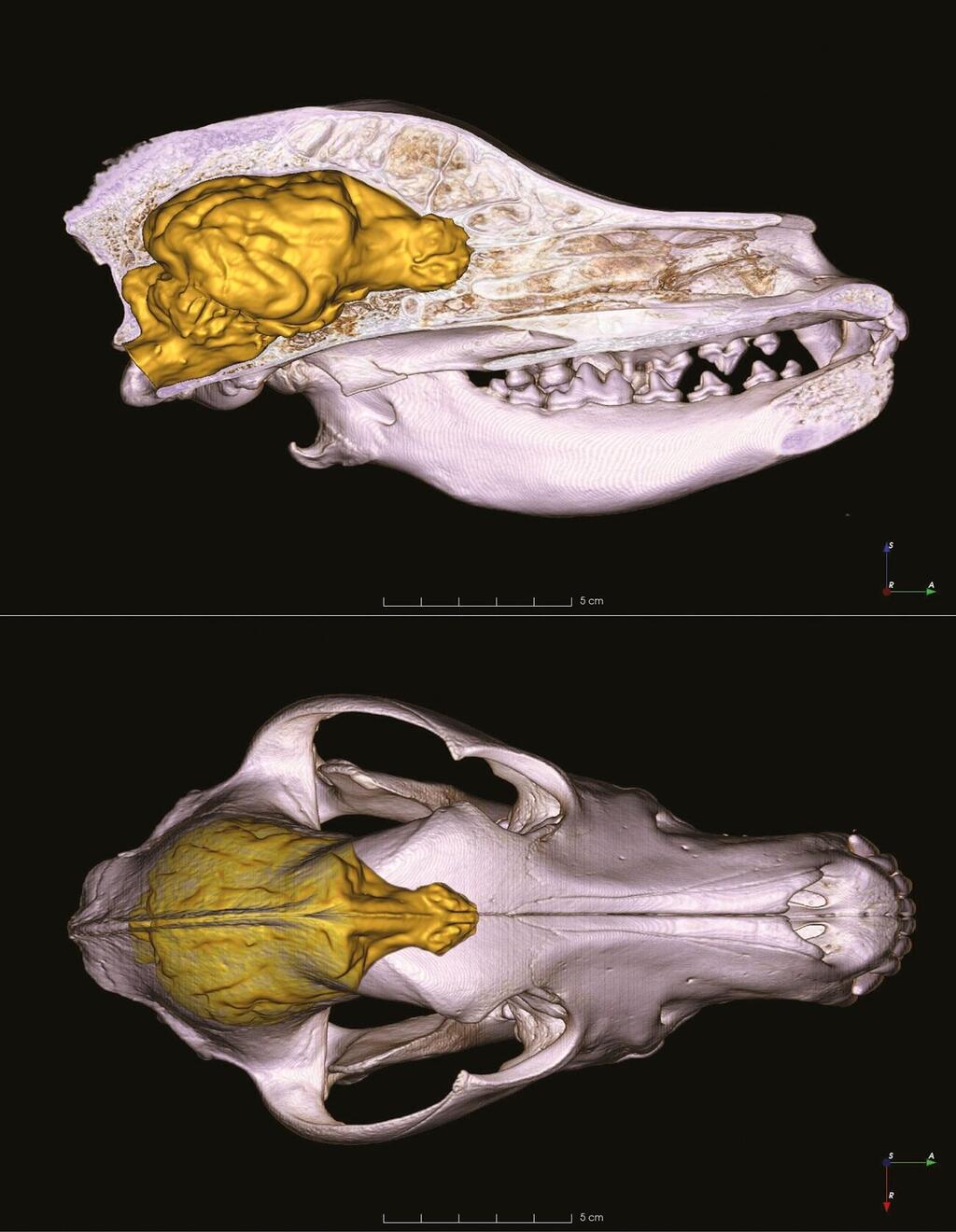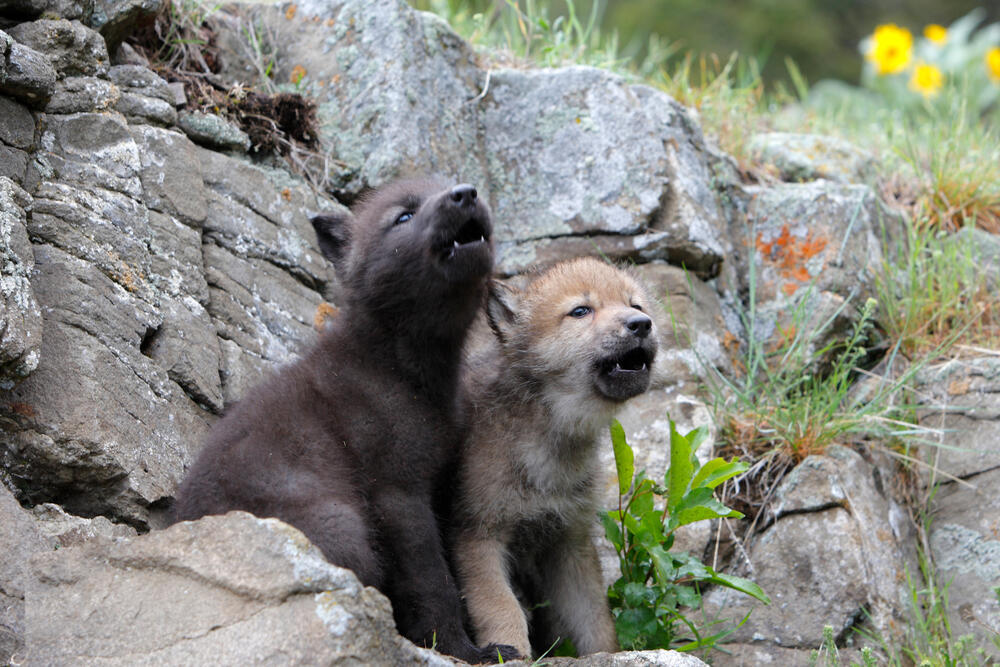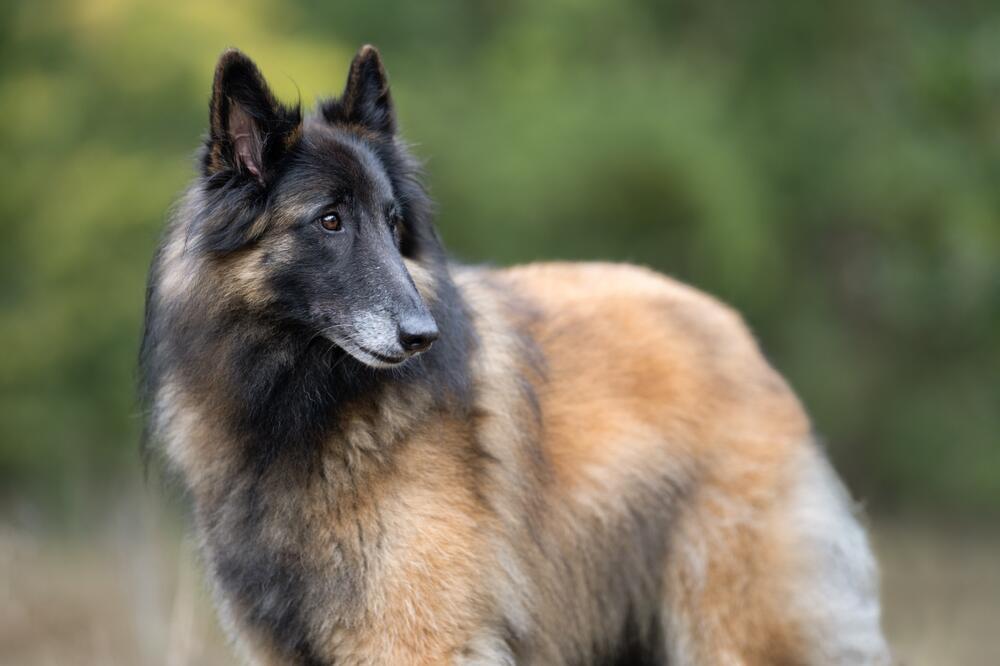Researchers claim that brain development cannot be attributed to the roles or life history characteristics of particular species, suggesting that brain size is likely influenced by the process of urbanization and a more complex social environment.
More Stories:
According to the researchers, the more than 400 dog breeds known today evolved relatively quickly and exhibit great diversity, making them a treasure trove for researchers interested in examining the rapid changes that occur within a particular species.
3 View gallery


The skull of a Hungarian vizsla and the 3D model of the brain in it based on high-resolution CT-scanning
(Photo: Evolution (2023). DOI: 10.1093/evolut/qpad063)
Researchers have long been curious about the factors that influence brain size, because the human brain, for example, is unusually large compared to the size of the body. Therefore, a comparison between the different breeds of dogs can help answer some questions that remain unsolved, when all that is known is that thinking and cognitive processes require a lot of energy, and maintaining a larger brain takes more effort.
"The brains of domesticated animals can be up to twenty percent smaller than those of their wild ancestors. The likely reason for this is that the lives of domesticated species are simpler compared to those of their wild counterparts. In the safe environment provided by humans, there is no need to fear predator attacks or hunt for food. Therefore, there is no need to sustain the energetically costly large brain, and the freed-up energy can be directed towards other purposes, such as producing more offspring, which is important for domesticated animals,” said László Zsolt Garamszegi, an evolutionary biologist at the Ecological Research Center in Hungary, who has been studying the evolution of brain size for some time and is one of the authors of the study.
Niclas Kolm from Stockholm University, who is one of the authors of the study and focuses on brain evolution and the link between variation in brain morphology and behavior, added: “Different dog breeds live in varying levels of social complexity and perform complex tasks, which likely require a larger brain capacity. Therefore, we hypothesize that the selective pressures on the brain can vary within the dog species, and we may find differences in brain size among breeds based on the tasks they perform or their genetic distance from wolves."
This is the first comprehensive study of the brain size of different dog breeds, and it took several decades to prepare. Tibor Csörgő, a senior research fellow at the Department of Anatomy, Cell and Developmental Biology at Eötvös Loránd University (ELTE), has been collecting skulls for decades. CT scans of the skulls were performed by Medicopus Nonprofit Ltd. in Kaposvár, Hungary.
Based on the CT images, veterinarian Kálmán Czeibert reconstructed the brains and determined their exact volume. This invaluable collection was complemented by the Canine Brain and Tissue Bank, operated by ELTE for the past seven years, which enabled the verification of brain volumes calculated from skull images using actual brains.
Thus, the findings confirm that domestication led to a decrease in brain size in dogs. However, what surprised the researchers was that the farther a dog breed Genetically from wolves, so his relative brain size increased.
According to the results published in the journal Evolution, wolves have an average brain volume of 131 cc, associated with an average body weight of 31 kg. In the case of dogs in a similar weight category, the brain volume is only about three-quarters of that of wolves, approximately 100 cc. Thus, the findings confirm that domestication led to a decrease in brain size in dogs. However, what surprised the researchers was that the farther a dog breed genetically from wolves, the bigger was the relative size of its brain.
Contrary to expectations, the original role of breeds, average litter size, and lifespan are independent of brain size.
"The domestication of dogs began approximately 25,000 years ago, but for 10 thousand years, dogs and wolves did not differ in appearance. Many ancient breeds, such as sled dogs, still resemble wolves today. However, the transition to settlement, agriculture, pastoralism, and the accumulation of wealth offered new and varied tasks for dogs, requiring guard dogs, herding dogs, hunting dogs, and even lap dogs. However, a significant portion of the distinct-looking breeds known today has only emerged since the industrial revolution, primarily in the last two centuries, as dog breeding has become a kind of hobby," says Enikő Kubinyi, a senior research fellow in the department of ethology (a science that deals with the study of the behavior of animals in the wild, in their natural environment, and their response to this environment in its various aspects) at Ettoche Laurent University.
"The results show that the breeding of modern dog breeds has been accompanied by an increase in brain size compared to ancient breeds. We couldn't explain this based on the tasks or life history characteristics of the breeds, so we can only speculate about the reasons. Perhaps the more complex social environment, urbanization, and adaptation to more rules and expectations have caused this change, affecting all modern breeds," he added.
In fact, these findings are supported by past research that ancient breeds known for their independence are less responsive to human cues and bark less, thus exhibiting differences in visual and acoustic communication compared to modern breeds.



